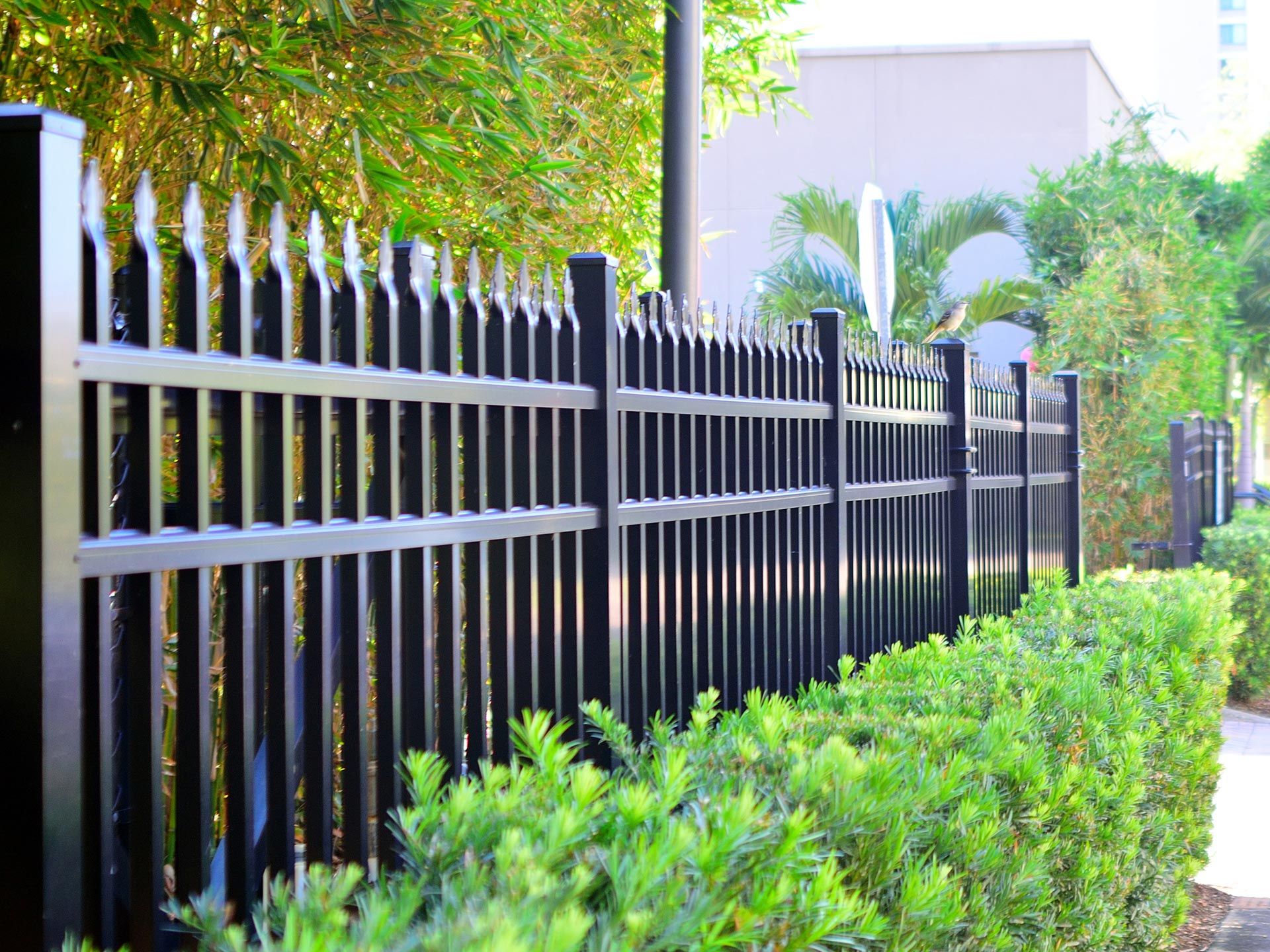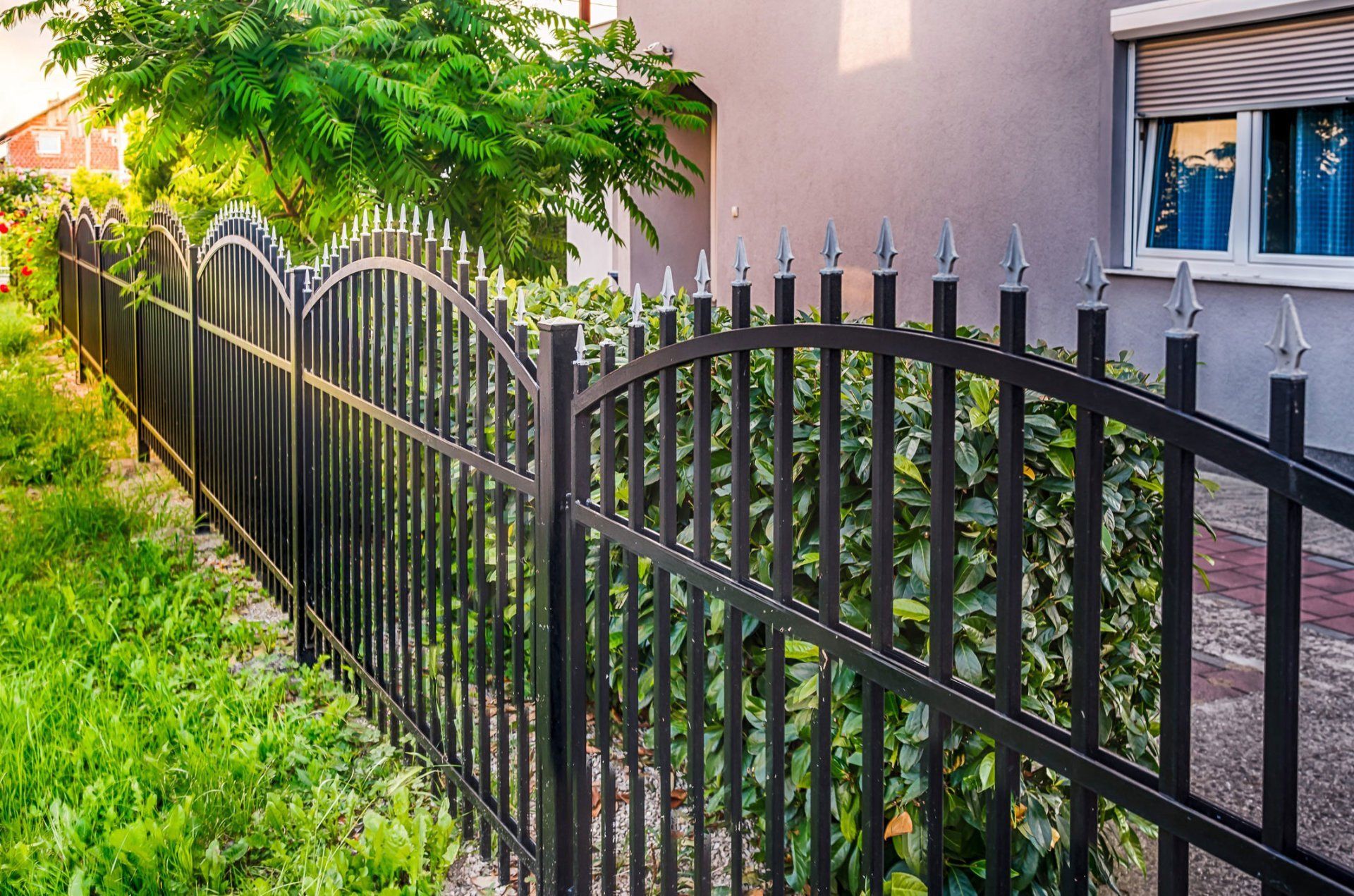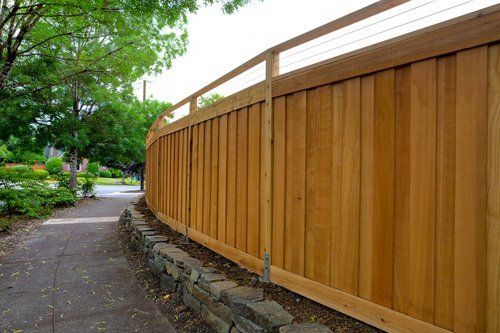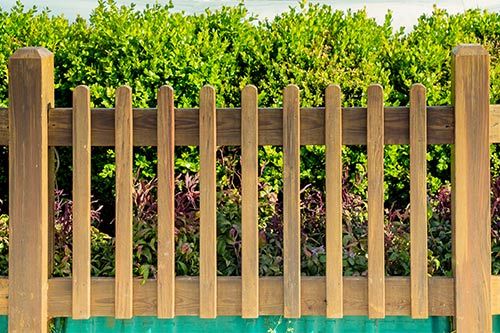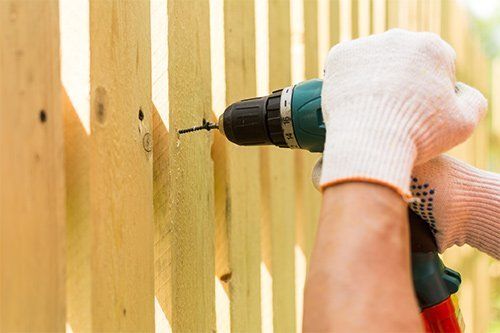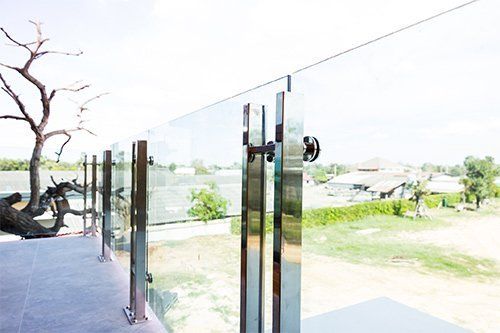Blog Layout
Choosing Between The 3 Main Styles Of Wood Fences
Admin • February 12, 2018
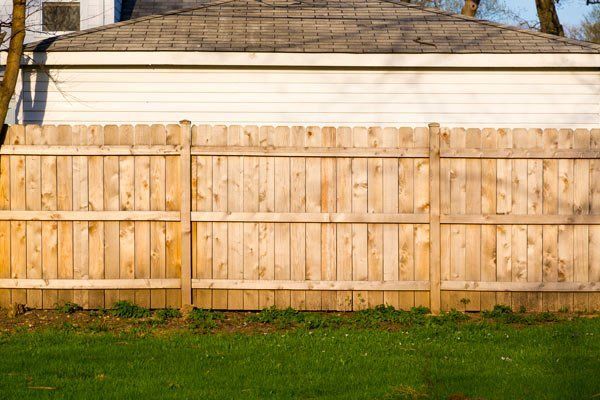
Fences serve a lot of purposes, including keeping you safe and marking the edges of your property. Wood is the traditional material for fences. Wooden fencing comes in three basic styles with numerous variations within the style. Your needs, as well as your style preferences, will help drive your selection of a wooden fence.
Picket Fence
Picket fences feature a regular series of posts with rails in between. Attached to these rails are vertical boards, the pickets. The standard picket fence features pointed or rounded tops. However, they can be flat, too. Contractors can also use rounded pickets with carved tops for a more ornate effect.
Another customization for picket fencing is the shape the tops of the pickets make as a group. Again, the traditional shape is straight. However, the picket lengths can be varied to create a gentle curve or a U-shape.
Privacy Fence
A privacy fence consists of the same basic components as a picket fence. However, the pickets are much wider, and there is little or no gap between them - hence, how they give you privacy. Likewise, they're typically much higher than picket fences. According to the Landscaping Network, privacy fences usually range between six to eight feet.
Contractors have different options for the style, including the board on board construction which features the pickets alternating on either side of the rail. As with picket fencing, the tops can be straight, concave, or convex. Contractors can even install a top rail.
A common customization for privacy fences is adding lattice panels. These panels are usually attached to the top of the fence to open up the appearance somewhat. However, you can also have lattice panels interspersed with the privacy panels.
Split Rail Fence
A split rail fence takes away the pickets - all you have are the posts and the rails. The standard construction features two to four straight boards between the rails. However, you can also add diagonal or crossed boards for visual interest.
A rustic take on the split rail fence is the stacked fence. With this construction, contractors omit the posts completely. Instead, they stack thick rails in a zig-zag pattern, usually using rebar stakes or spikes to hold the rails together.
Matching a Wood Fence to your House
Your first consideration is going to be what you need your fence to do. If privacy and security are the biggest concerns, then a privacy fence is the right choice. Picket fencing marks your property lines and can keep pets and children in your yard. Split rail fencing can also mark your property, but it's more suitable for horses and livestock.
Certain styles of houses call for a specific fence style. For example, picket fences work well with any historical house or traditional style, such as a cottage. Ranch, cabin, and farmhouse styles usually call for split rail fencing. Privacy fences look good with modern houses.
When you're considering some of the style choices, such as picket shapes and post caps, consider the style of your house. If your house features ornate detailing, a rustic stacked fence is probably not the best style. You'd be better off with a picket fence with post caps and carved pickets. Conversely, such a fence would look odd in front of a rustic cabin - you'd want the stacked fence.
Finally, consider shapes found within the façade of your house. You could use the concave or convex tops to echo arches in your house's façade. Straighter constructions complement the geometry-oriented ideal of modern architecture.
Choose wood because it's a beautiful and sturdy material for fencing. Visit Sam's Fencing for advice on choosing the right wooden fence for your property.
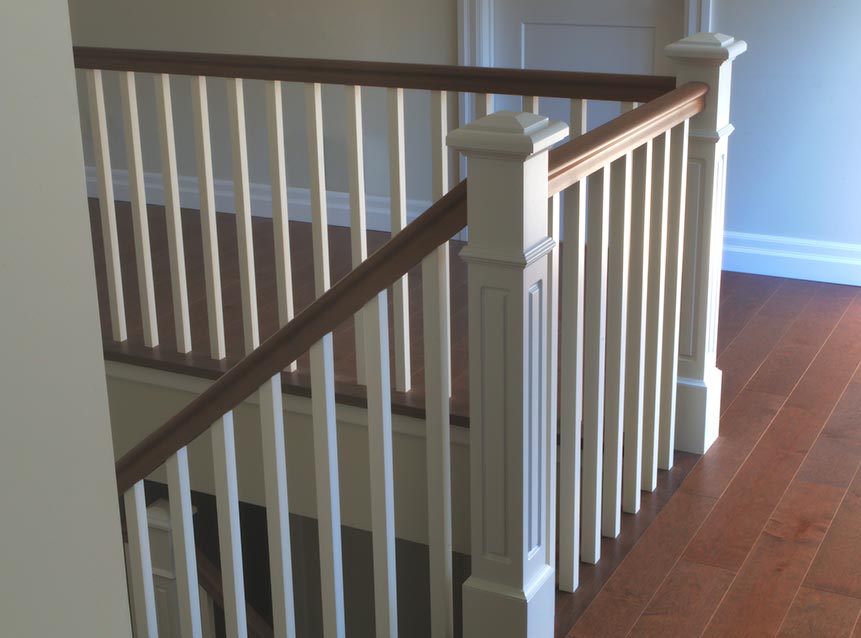
By Admin
•
October 10, 2018
A stair handrail is a utilitarian installation, something that helps prevent you from falling while navigating the stairs. However, a handrail also carries visual weight. It helps draw the eyes upward along with the stairs. When you go to choose a handrail for your house, you want it to match the overall style. Below are some ideas for choosing a handrail to promote your home's unique style.
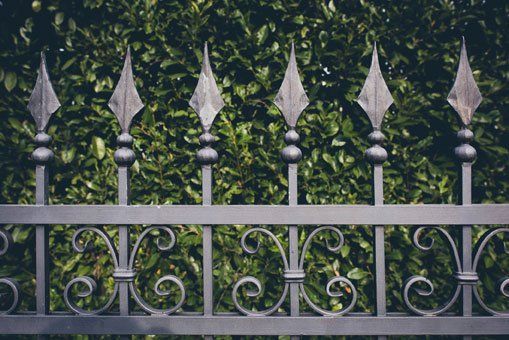
By Admin
•
August 7, 2018
Wrought iron is a gorgeous fencing option that can significantly increase your home's value. What's more, wrought iron fencing is very strong and durable. That said, just like any other fencing, you do need to maintain wrought iron to keep it looking fresh. Below are four maintenance tasks you should perform on your wrought iron fence. Wash the Fence All fences require some sort of cleaning. In the case of wrought iron, you'll simply need to hand-wash it. You should clean your fence at least once a year, or any time you notice it's gotten particularly dirty. To wash your fence, make a solution of warm water and dish soap in a bucket - you don't want an abrasive cleanser as this can scratch the surface of the fence. Use a large, soft sponge to wash the fence. If you need to use a brush to remove bird droppings and grime, don't choose one with especially stiff bristles. After soaping up the fence, rinse all the suds away with a hose. Make sure you completely rinse away the soap because lingering residue can appear as discoloration. You want your wrought iron to dry thoroughly. The sun and air should be sufficient to that end. However, you might give any hidden corners a once-over with a towel so they don't stay damp. Look for Scratches or Rust Any fence you have installed needs to be inspected annually. When it comes to wrought iron, you're on the lookout for scratches in particular. While iron isn't especially prone to scratching, it is a little softer steel. Therefore, make sure you give your fence a good once-over. This inspection is important because scratches can cut through the coating on the exterior of the tubes of iron. The coating is what prevents your wrought iron fence from rusting, and any chinks in that armor can affect its efficacy. Speaking of, you also want to watch out for any direct signs of rusting. Upgrades in manufacturing have significantly minimized the rust potential of the material. However, you want to stop any corrosion before it has a chance to affect the structure of the fence itself. Watch for Signs of Fracture The fact that wrought iron is a little softer than steel actually increases some of its durability. The softer material can better resist shocks and vibration, say, from large trucks passing by. However, the iron can start to fracture with repeated shocks. Luckily, the material "announces" that its structural integrity has been compromised. You might see rust starting to form as the protective coating falls away. You may even see small cracks. If you start to see these signs, have the affected panel replaced before it pulls on the adjacent panels and compromises their structural integrity. Keep Plants Away From the Fencing As always, one of the best maintenance tips is to prevent damage from occurring in the first place. Plants draped over fencing creates a gorgeous effect - from afar. Unfortunately, the plants can trap moisture under their foliage, which promotes corrosion. A weighty plant can even affect the structure, though this is less likely with wrought iron than with vinyl. Therefore, your best bet for maintaining your wrought iron fence is to keep plant life away from it. Watch what's growing at the base of your fence, and cut it back so the vegetation doesn't climb up the posts or rails. Likewise, don't intentionally train a plant over your fencing. A better option is to install a nearby trellis constructed for that use. You'll get the same effect without the fence damage. When you are cutting back vegetation, be careful with your weed whacker. Hitting the base of the fence with blades isn't good for the machine or the fencing. With just a little due diligence and maintenance, your wrought iron fence can last a lifetime. Let Sam's Fencing help with all your fencing projects.
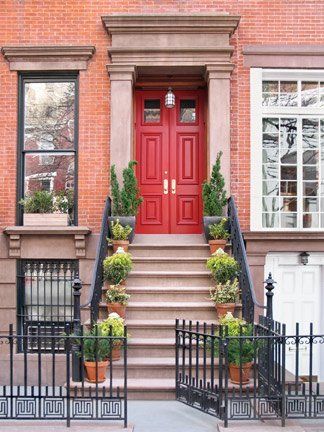
By Admin
•
June 5, 2018
Your home's front porch is the first thing many people notice when they come to your property. The railing and banister you have surrounding your porch provide a protective support for people who use it, but these same structures can also add beauty and curb appeal to your home. If your front porch railings and banister are bent, showing signs of age, or starting to rust, then it's time to upgrade. Speak to your fencing contractor about the various popular materials used in exterior stairs, and explore your options here as well. Wrought Iron Durable, long-lasting, and very attractive, wrought iron is an ideal choice for both a railing and a banister. This material gives your front porch classic yet contemporary appeal. What makes wrought iron an ideal material choice in fencing and railing construction is this - wrought iron is extremely easy to manipulate. This means the metal is very easy to bend and create patterns with, allowing you to customize the appeal of your front porch railing easily. However, you don't have to use wrought iron, or any other material, alone. For example, you can design a railing with swirling rails while having the banister formed out of sealed, rustic wood for an elegant appeal that is also naturally charming. Glass A steel-enclosed glass railing is not only elegant and contemporary in its design, the material is streamlined and extremely unique as well. Tempered glass is often used in railing construction for added strength and durability. If you choose frosted glass for your stair's construction, then the glass will offer a surprising amount of privacy to your front door as a railing style. Frosted glass allows light to penetrate the area but creates little transparency, allowing you to enjoy your front porch whenever you wish without feeling exposed. Wood Wood is a classic choice for a banister and railing. The same wood often used in deck building (cedar and redwood) is often used in railing design as well. Choose wood that is sealed and treated for UV rays to prevent the wood from drying out or fading under the sun's glare. You can choose to leave wood in its natural shape for a woodsy, charming appeal, or select wood that has been rounded and sanded for a more modern approach to wood railings and banisters. For the banister, consider aged driftwood, barn wood, or a large plank of exotic wood to give your porch railing added appeal. Vinyl Vinyl is a wise choice for your front porch if you want a streamlined railing that won't go out of style. Vinyl is one of the most popular choices for residential fences because the material is easy to install, relatively inexpensive, and requires little maintenance. If you want the same streamlined appearance of vinyl yet you want to have more freedom with design choices, then wood is a lovely alternative. Steel Steel is similar to wrought iron in its durability and ability to last for many years. This material can be decorative but does not come in a variety of shapes and styles for railing use. Still, if you have a wider front porch that requires a reliable railing and banister, steel is an excellent option. Steel can also be powder coated or painted to meet your exterior decorative needs. Your fencing contractor will assist you in choosing the best type of railing and banister material for your front porch. When you hire a professional fencing expert from Sam's Fencing Inc., you are in quality hands for your fencing and railing project. Call our team to schedule an appointment today.
CONTACT INFORMATION
Address:
10039 Prospect Ave., Ste. K Santee, CA 92071
Phone:
Office:
619-334-9771 | Mobile:
619-654-0789
Email:
sam@samsfence.net
Fax: 619-334-9772







CA License #946946
OUR LOCATION
Content, including images, displayed on this website is protected by copyright laws. Downloading, republication, retransmission or reproduction of content on this website is strictly prohibited. Terms of Use
| Privacy Policy

